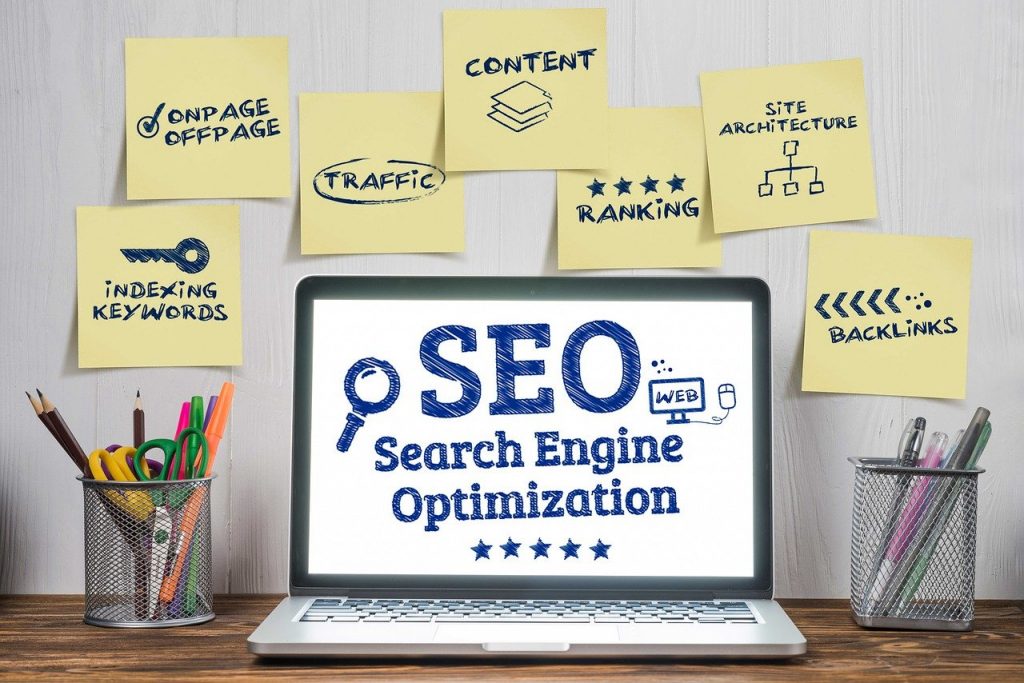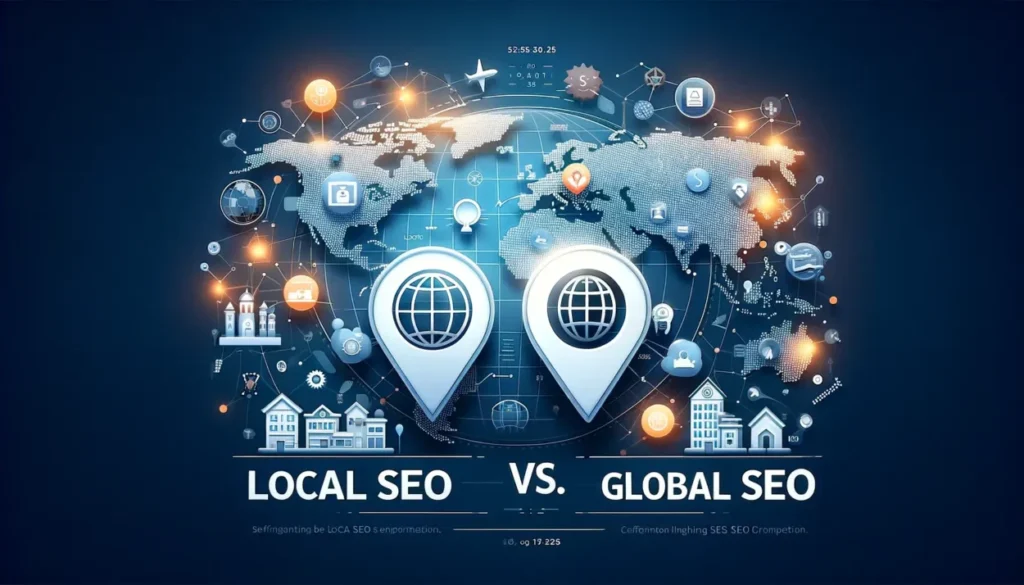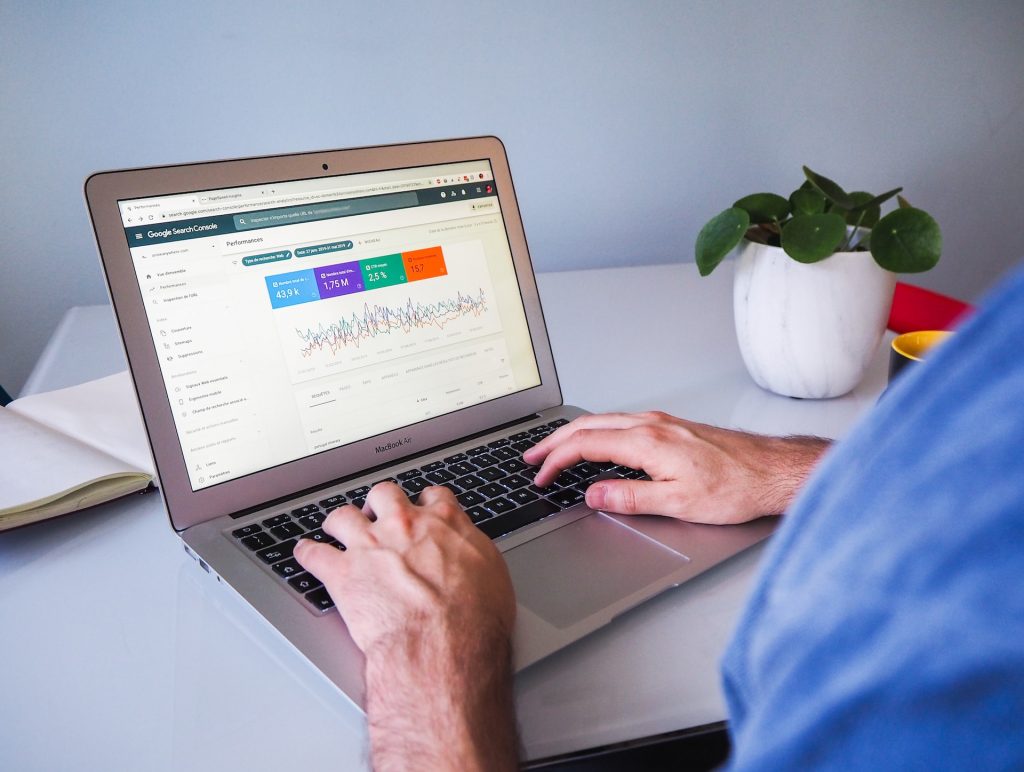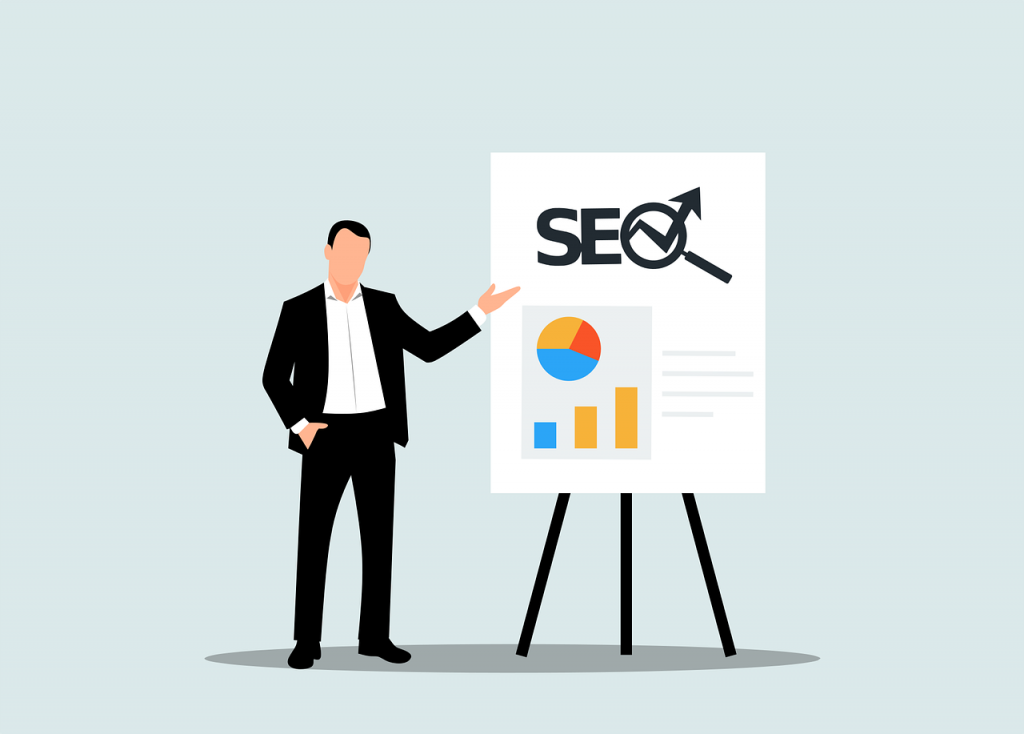In the bustling digital marketplace, where visibility equates to success, two powerful beacons stand out, each vying for the attention of businesses keen to illuminate their online presence. On one side, Search Engine Optimization (SEO) emerges like the steady glow of a lighthouse, offering a guiding light to organic search traffic through the ever-changing tides of algorithm updates. Its counterpart, Pay-Per-Click (PPC) advertising, bursts forth as a series of brilliant fireworks, capturing immediate attention with its bright flashes of targeted ad placements. Together, these strategies form the cornerstone of digital marketing, yet they each hold their unique allure and promise for enterprises navigating the vast ocean of the internet.
As one delves into the depths of SEO, the allure of a cost-effective and enduring online presence becomes evident, slowly sculpting a path to the top of search engine results with the meticulous craft of keyword research and content creation. In contrast, PPC stands ready, offering the thrill of an instant spotlight with strategic bids and captivating ads that lure in clicks and conversions at the speed of light.
Understanding SEO: The Long-Term Investment
SEO, short for search engine optimization, unfurls as a digital alchemy that transmutes obscurity into prominence. It’s the art of tailoring website content to the whims of search engines, ensuring that when curiosity stirs and queries fly, the right pages emerge. The importance of SEO lies in its ability to elevate website visibility, guiding a stream of seekers to the knowledge or services they pursue. Within this intricate web of SEO, link building emerges as a cornerstone, akin to forging connections in a vast network. Each link serves as a beacon, signaling the relevance and authority of content, thus weaving a site’s reputation into the fabric of the internet.
The Meaning and Importance of SEO
Navigating through the digital landscape is akin to embarking on an epic journey through a dense forest, and SEO—Search Engine Optimization—is the compass that guides you to the clearing of discovery. Imagine the internet as an endless expanse of information, with millions of paths intersecting, leading to treasures of knowledge. In this intricate web, the meaning and importance of SEO stand out like a lighthouse for ships sailing the cyber seas.
SEO is more than just a mere tactic; it’s a strategic approach that ensures that when one embarks on a quest for information, the paths laid out by your digital domain are clear, compelling, and credible. It’s not just about reaching the summit of search engine results—it’s about creating a journey for explorers that is enriching and enlightening. As the architect of this expedition, mastering the art of SEO, including the meticulous craft of link building, is essential in sculpting the pathways that lead seekers to the value that lies within your realm of expertise.
How SEO Increases Website Visibility
Imagine a bustling digital marketplace where every storefront vies for attention, SEO (search engine optimization) serves as the neon sign guiding customers through the virtual alleyways directly to your door. As an integral cog in the machinery of online presence, SEO propels your platform into the spotlight of search engine results pages.
In the realm of SEO, link building emerges as a masterful art of connections. By weaving a tapestry of links from reputable sources, a website becomes akin to a popular landmark on the internet map; search engines, akin to travelers, take note of these frequented junctions, elevating the site’s stature in their rankings.
Each link acts as a glowing recommendation, a whisper in the digital ether suggesting prominence and trustworthiness. The cumulative effect of link building is a beacon that signals to search engines the value and relevance of your content, thus enhancing the likelihood of your site being displayed when users query for related topics.
The Role of Link Building in SEO
Sailing smoothly from the shores of foundational SEO knowledge, we venture into the intricacies of crafting digital bridges with the art of link building. Imagine a bustling city where roads connect every district, shop, and home; in the realm of SEO search engine optimization, link building serves as the construction of these vital pathways. Each carefully placed hyperlink is akin to a handcrafted cobblestone, laying the foundation for a thoroughfare that leads search engines and users alike through the labyrinth of online content.
The role of link building in SEO is akin to securing invitations to the most exclusive parties in town. Each link acts as a nod of approval, a whisper in the ear of search engines that there is value to be discovered at the destination. The more esteemed the source of the link, the stronger the recommendation, enhancing the reputability of the linked domain. Through the meticulous weaving of this network, a tapestry of connectivity emerges, with every thread strengthening the fabric of online presence and community.
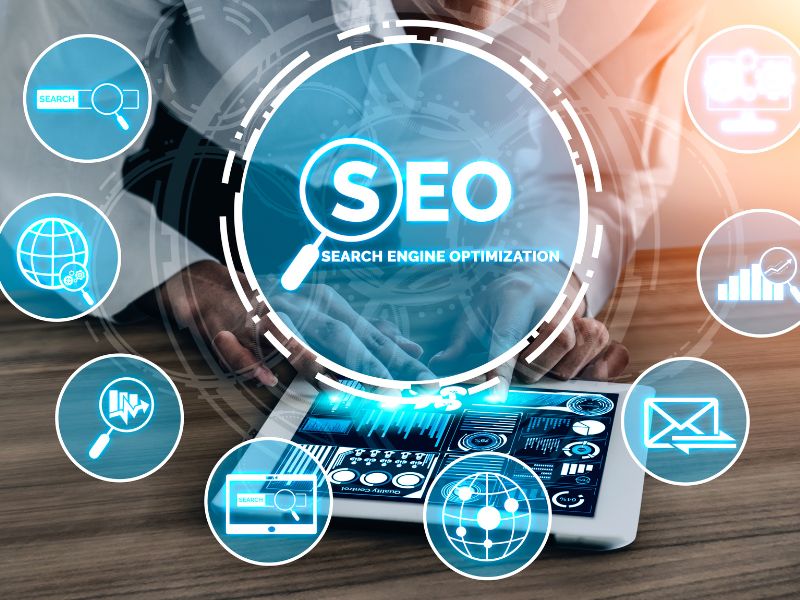
Exploring the World of SEO: Organic Results and Their Impact
Delving into the intricacies of SEO, a vibrant tapestry of organic results takes center stage, revealing the delicate interplay of algorithms and content quality. These naturally occurring listings, untainted by paid advertising, offer a treasure trove of credibility and user trust. As one navigates through the dense foliage of search engine results, the power of Amazon SEO emerges as a distinct beast, its mighty roar echoing through the vast marketplace, guiding shoppers on a journey to products aligned with their quests. Here, the importance of organic transactions becomes palpable, each one a golden thread woven into the fabric of online commercial success, where genuine connections between searchers and solutions flourish.
Unpacking Organic Results in SEO
Just as the sun nourishes the earth and allows the natural world to flourish, so too does the cultivation of organic results in SEO yield a bountiful harvest of clicks and engagements for your online presence. Unpacking organic results in SEO is akin to tending a garden; it demands patience, care, and an understanding of the ecosystem to thrive.
Organic results are the fruits borne from the laborious efforts of content creation, keyword harmony, and seamless user experience. They are the lush greenery that springs forth on the search engine results page (SERP), untainted by the influence of paid advertising. These results earn their place through merit—the quality of their content, the relevance to user queries, and the richness of information they provide.
Navigating through organic results is a journey through a digital landscape where each click is a step on a path paved by authenticity. The higher the rank an organic result achieves, the more visible it becomes, like a tree rising above the forest canopy to bask in the sunlight.
The Power of Amazon SEO
As we delve deeper into the fertile soil of online marketing strategies, let’s not overlook the towering presence of the Amazon marketplace, where the seeds of SEO bloom differently. Navigating the labyrinth of product listings, the right tactics can propel items to the summit of search results, capturing the gaze of potential buyers. Without uttering the overused phrase of SEO search engine optimization, envision the Amazon platform as a vast, bustling digital bazaar, where each product vies for the limelight in a grand, never-ending showcase.
The mastery of Amazon’s unique algorithm demands a special blend of keyword alchemy and customer-centric finesse. By optimizing product pages with the right keywords and engaging content, sellers can witness their products ascend through the ranks, basking in the glow of prime virtual real estate—landing in the coveted sphere of organic results. Here, without spending a dime on ads, visibility soars, and the potential for increased sales becomes as boundless as the sky on a clear day.
The Importance of Organic Transactions
Navigating beyond the foundational elements of SEO, imagine a bustling digital marketplace where every click and interaction blooms from genuine interest rather than the allure of flashy advertisements. Here, the focus shifts to the essence of what can be termed as natural exchanges of the digital realm. These exchanges, untouched by the direct influence of paid promotions, hold a treasure trove of benefits for the discerning online entrepreneur.
Picture a scenario where your digital storefront becomes a magnet for customers who are actively seeking what you offer. These individuals arrive not through the neon signs of online ads, but through the invisible pathways of well-crafted strategies that lead them to your doorsteps. They come with intent, with questions they believe you can answer, and with the confidence that you are the solution they’ve been searching for. This is the magic of what we might call the garden of natural online interactions, where the currency is trust, and the transactions are as real as they get, fostering a loyal customer base and a reputation for authenticity that stands the test of time.
Delving into SEO: Long-Term Benefits and Choosing an Agency
Embarking on a journey with SEO unfurls a panorama of long-term benefits that can elevate a brand’s digital presence, making it a beacon in the vast online marketplace. The dividends of such an investment are not mere upticks in page rankings, but a woven tapestry of credibility and authority that accrues over time. When the moment arrives to select a new SEO agency, it’s akin to choosing a partner for a voyage across digital seas—a decision that demands discernment for a harmonious fusion of expertise and vision.
Why Investing in SEO Offers Long-Term Benefits
Imagine a garden where the seeds of SEO have been sown, and with time and care, the fruits of digital presence and authority begin to flourish. Investing in SEO is akin to nurturing this garden, promising a harvest that extends far beyond the initial planting season.
The long-term benefits of this investment are bountiful; a well-optimized web presence matures like a robust vineyard, yielding a vintage that grows more delightful with age. The vines of content and keywords, once planted, can climb the trellises of search rankings, eventually providing shade in the form of sustained online prominence.
This digital ecosystem, carefully cultivated, ensures that the brand’s roots run deep, making it resilient against the winds of market change and the whims of online trends. As the seasons pass, the enduring nature of SEO continues to bear fruit, offering a legacy of visibility that can outlast short-term marketing campaigns.
The long-term benefits of such a strategy encompass a brand’s evolving story, told across evergreen content that blooms perennially, attracting visitors to the garden year after year.
How to Choose a New SEO Agency
As we navigate the labyrinthine world of enhancing online presence, choosing a partner for this journey becomes a pivotal decision. Unveiling the secrets of longterm benefits in the digital realm requires a steadfast collaborator—one with a compass pointing towards enduring success.
Embarking on the quest to select a fresh SEO collaborator involves a careful blend of scrutiny and foresight. Seek out a firm with a tapestry of success stories, whose clients’ narratives are embroidered with triumph. The longevity of their results speaks volumes, whispering the promise of longterm benefits to those willing to listen.
Dive into the depths of their strategies. Do they cultivate a garden of keywords with meticulous care, ensuring that each term blooms at the right moment to capture the essence of your audience’s desires? Is their content a banquet that feeds the voracious appetite of search engines, while also delighting the senses of human guests?
Commit to a partner whose approach resonates with your vision, one that crafts a symphony of strategies harmonious with your brand’s voice.
SEO: A Strategy for the Long-Term
Imagine a garden, where each seed planted is a carefully chosen keyword, and the nurturing soil is the ever-evolving algorithms of search engines. As the sun rises and sets, these seeds grow into a lush landscape of content, each bloom representing a page or article that rises in rankings over time.
SEO is akin to cultivating a perennial garden rather than a seasonal plot. The strategy extends far beyond the immediate surge of traffic; it’s about creating a digital ecosystem that thrives, adapts, and flourishes. The tendrils of a well-implemented SEO plan reach deep into the future, intertwining with the roots of a brand’s online presence, ensuring that the site not only climbs but also maintains its stance at the peak of search results.
The key to a long-standing strategy in this digital topiary is patience and persistence. Implementing SEO is a commitment to gradual growth, a continuous investment in content that remains relevant and engaging through the relentless march of internet changes.
Navigating PPC: The Immediate Impact
Embarking on the PPC journey, one discovers a landscape where the ppc pros, like a flourishing garden, include instant visibility in the competitive digital marketplace. However, like any garden with its share of weeds, the ppc cons can sprout in the form of budget mismanagement and potential click fraud. Understanding ppc costs becomes a pivotal compass in navigating this terrain, guiding one towards a balanced return on investment that illuminates the path ahead.
The Pros and Cons of PPC
As we pivot from the sustained advantages of strategic search enhancements, one cannot help but consider the contrasting nature of Pay-Per-Click advertising, where immediacy reigns supreme. Within the tapestry of digital marketing, PPC ads emerge as vibrant threads, weaving potential for swift visibility and conversion. The allure of PPC pros cannot be understated; these ads offer the promise of quick traction, a beacon for businesses eager to illuminate their offerings in the bustling marketplace.
Yet, as with any bright light, shadows exist—PPC cons that one must navigate with caution. The enchantment of instant results may cast a veil over the reality of fluctuating costs and the need for meticulous campaign management. A balance must be struck, for while PPC ads can be the key to unlocking immediate market presence, they require a steady hand to maintain their luster.
The spectrum of PPC pros is radiant: the ability to target with laser precision, the flexibility to adjust campaigns in real-time, and the data-rich feedback that informs strategic refinement.
Understanding PPC Costs and ROI
As we shift from the enduring landscape of SEO to the bustling marketplace of PPC, one can almost hear the virtual cash registers ringing with every click. Understanding the financial intricacies of PPC campaigns is akin to mastering the art of alchemy, turning clicks into gold with a well-strategized investment.
The allure of PPC ads lies in their potential to deliver an immediate surge in traffic, with dazzling displays that capture the attention and wallets of eager consumers. Here, the savvy investor dives into the depths to uncover the return on investment (ROI) that PPC ads promise, balancing the scales between expenditure and earnings.
The tapestry of PPC pros weaves a tale of targeted reach and measurable results. Yet, the vibrant threads also reveal the subtle ppc cons; a budget untamed can quickly become a voracious beast, consuming resources with an insatiable appetite. The key is to understand the alchemy of PPC ads—meticulously calculating bids, ad quality, and conversion rates to ensure that every dollar spent is an investment, not just an expense.
PPC Ads: The Key to Immediate Results
While SEO strategies weave a tapestry of enduring online presence, PPC ads sparkle as the quicksilver of digital marketing, catching the eye with their immediate luminosity. With PPC ads, the spotlight turns on almost instantly, casting a brilliant glow on products and services that demand immediate attention. Like a flare shot into the night sky, these ads signal availability and readiness to engage with lightning-fast visibility.
The landscape of PPC ads is a bustling marketplace, where every click is a potential customer knocking at the door. One masterfully crafted PPC ad can act as an open invitation to an audience poised to take action, guiding them through the digital threshold with the promise of fulfilling their immediate needs. The ppc pros recognize this, harnessing the power of PPC ads to generate a surge of traffic that translates into brisk conversions and palpable buzz.
Each click acts as a pulse, a heartbeat of potential sales echoing through the virtual halls of commerce.
The Unexplored Side of PPC: Niche Industries and Placement Costs
Within the tapestry of digital marketing, PPC emerges as a vibrant thread for sectors with a narrow focus, weaving immediate results with precision targeting. Comprehending PPC placement cost becomes pivotal, as it dictates the landscape where advertisements bloom. The artistry of PPC lies in its ability to capture the essence of immediacy, serving ads to a finely tuned audience with the promise of immediate results. The cornerstone of such a strategy rests on pensive PPC keywords, which are carefully selected to resonate with the unique desires of a specific sector, ensuring that each click is a step towards immediate results.
Why PPC is Effective in Niche Industries
As we pivot from the immediate impact PPC can have on a business’s marketing success, let’s delve into a less charted territory where precision targeting and specialized markets intertwine. In the world of Pay-Per-Click advertising, quaint boutique industries often find a fertile ground for growth, where each click is a potential to connect with an enthusiast or a connoisseur searching for their particular passion.
Why is PPC so effective for these specialized sectors? Imagine a narrow alley bustling with curious shoppers—each one is there because they have a specific interest in the unique offerings found within. PPC campaigns, much like this alley, offer a direct pathway to a storefront that caters to a distinct clientele. The chances are higher that the audience clicking through is already primed and interested, and this laser-focused approach can yield immediate results.
This is where PPC shines, illuminating the way for niche markets to capture the attention of a targeted, engaged audience that’s already on the hunt for the rarities they offer.
Understanding PPC Placement Cost
As we glide from the swift and significant effects of PPC campaigns, it’s time to illuminate the financial tapestry woven by the strategic positioning of ads. The art of understanding PPC placement expenses is akin to unraveling the mysteries of an auction house, where bids are placed not in the hushed tones of an elite gathering, but at the speed of light in the digital marketplace.
Delving into the intricacies of these expenses, one discovers that the cost to secure prime ad real estate hinges on multiple factors. These include the competitiveness of the selected keywords, the quality score attributed to the ad by search engines, and the alignment of the ad with the user’s intent. The dynamic pricing model ensures that ad spend is continuously optimized for maximum efficiency, with the costs ebbing and flowing in response to the ever-shifting tides of demand.
Each click is a delicate dance of numbers, where the highest bidder may capture the coveted click, but not without a keen understanding of the value behind each potential customer interaction.
The Role of Pensive PPC Keywords in PPC Strategy
As the conversation drifts away from the swift and direct influence of PPC, let us delve into the less charted waters of keyword strategy within pay-per-click campaigns. Imagine a masterful gardener, selecting seeds with the utmost care, knowing that each will blossom into a flower of a particular hue and fragrance. Similarly, the selection of keywords in PPC campaigns is an artful task that requires forethought and precision.
Carefully chosen keywords act as beacons, guiding potential customers through the digital expanse to discover products or services tailored to their unique needs and interests. The role of these thoughtfully selected search terms in PPC strategy is akin to plotting a treasure map, where X marks the spot of conversion and engagement.
Keywords, both common and obscure, are meticulously woven into the fabric of PPC advertisements, ensuring that each ad is a tapestry of relevance and intent. The delicate balance of specificity and appeal in keyword selection can elevate a campaign from the mundane to the magnetic, attracting clicks with the gentle pull of relevance.
PPC Cheat Sheet: Tips for Success
Navigating the landscape of Pay-Per-Click (PPC) advertising can feel like traversing a labyrinth, but with a comprehensive PPC cheat sheet in hand, the path to success becomes clear and radiant. This guide illuminates the steps for quick wins in the digital marketplace, outlining strategies to harness the power of PPC campaigns for swift, measurable outcomes.
As the journey progresses, one weighs the advantages and drawbacks of PPC. A balanced understanding emerges, revealing that while PPC can be a beacon for rapid audience engagement, it also demands careful consideration of its dual nature—offering both opportunities for growth and challenges in management.
A Comprehensive PPC Cheat Sheet
Venturing beyond the shadowy frontiers of untapped markets and their associated advertising expenditures, let’s unfurl the map to Pay-Per-Click (PPC) triumph. A comprehensive guide to PPC is akin to a navigator’s compass, pinpointing the direction towards the treasure trove of clicks and conversions.
Embark on this journey by meticulously selecting keywords that resonate with the whispers of potential customers, ensuring each term is a beacon that attracts the right audience. Craft enthralling ad copy, a siren song tailored to captivate and engage, promising solutions within the labyrinth of the internet.
Navigate through the bidding battleground with strategic prowess, balancing the scales of cost and visibility to hoist your ads atop the digital peaks. Analyze the terrain with analytical tools, deciphering the patterns of consumer behavior to refine your approach, ensuring every click is a step closer to the X marking the spot of success.
In this realm, the PPC map is ever-evolving, demanding vigilance and adaptability to the shifting winds of online advertising.
How to Achieve Immediate Results with PPC
As the curtain rises on the scene of Pay-Per-Click advertising, it becomes clear that the spotlight often shines brightly on the swift outcomes it can deliver. Imagine a bustling digital marketplace where each click is a potential customer, and speed is of the essence. In this arena, swift outcomes with PPC are akin to planting a garden where the flowers bloom almost instantly upon sowing the seeds.
To achieve these quick blooms, one must first select the most vibrant and attractive plants—or in PPC terms, choose keywords that are as relevant as they are captivating. Think of these keywords as the nectar that draws in the buzzing bees; they must be meticulously researched and chosen to match the exact queries potential customers are typing into search engines.
Next, crafting an irresistible lure is key—ads must be compelling, with calls-to-action that beckon like a bright, welcoming sign on a storefront. The ad copy should paint a picture of satisfaction and solution, making the prospect of clicking irresistible.
The Pros and Cons of PPC
As the curtain draws back from the lesser-known realms of niche advertising spend, the stage is set for a jolly jaunt through the garden of Pay-Per-Click gains and drawbacks, where each rose comes with its own thorn.
Admire the blossoming advantage that PPC campaigns shower upon a business, with their ability to propel a brand into the spotlight of the digital marketplace swiftly. The agility of PPC allows for rapid adjustments, turning the gears of advertising campaigns to align perfectly with the changing winds of consumer behavior.
Yet, in this same garden, one must tread lightly, for the thorns of potential downsides lurk beneath the petals. The financial outlay for PPC can escalate as quickly as a vine, especially in competitive sectors, where each click may cost a golden coin. Moreover, the beauty of PPC blooms might wither without constant nurturing; the moment attention falters, visibility may dip as if it were a delicate flower deprived of sunlight.
Understanding CRO: SEO Penalty Recovery and Best Practices
Embarking on a journey of CRO SEO penalty recovery, one imagines a digital landscape where earlier flourishing sites find themselves ensnared in the web of search engine sanctions. The path to redemption requires a nuanced blend of marketing methods, each step carefully chosen to mend the rift between a site and the almighty algorithms. Diving deeper, these marketing methods become the lifeline, a series of strategic maneuvers that delicately balance content refinement with user experience enhancement, ensuring that the recovery process is both holistic and effective.
As best practices dictate, SEO penalty recovery embraces a tapestry of techniques, all woven together to restore the digital equilibrium.
What is CRO SEO Penalty Recovery?
As we turn the page from the tactical world of PPC to the intricate labyrinth of SEO penalties, imagine a vibrant garden that thrives when tended to with care, but withers under neglect. This is the realm of CRO SEO Penalty Recovery, a crucial process for revitalizing digital landscapes that have been impacted by punitive actions from search engines.
Embarking on this journey, one must first understand that CRO SEO Penalty Recovery involves diagnosing the downturn in search rankings as a result of infractions against search engine guidelines. The digital garden, once blooming with visitors, sees a sudden frost as rankings plummet, leaving a chilling silence in its wake. The recovery process is akin to a meticulous gardener detecting the root cause of the issue, be it overuse of keywords or an unnatural profile of inbound links, and then methodically nursing the garden back to health.
While the specific marketing methods to address these issues are manifold, the core aim remains constant:
Marketing Methods for SEO Penalty Recovery
Transitioning from the realm of PPC, where quick wins can be thrilling, the journey of SEO penalty recovery often begins with a heavy heart. Yet, fear not, for the path to redemption can be paved with resilience and strategic marketing methods that rekindle your digital presence.
Embarking on this journey, the marketing method to start with is a thorough audit of your content. Like a gardener pruning away the dead leaves, eliminate any outdated or low-quality content that may be dragging your ranking down. Next, revitalize your online landscape by ensuring that the remaining content is rich with value, relevancy, and is aligned with best practices.
Engage in a meticulous review of your backlink profile, much like a detective sifting through clues, to disavow any toxic links that threaten your site’s health. Moreover, a robust outreach strategy can help foster new, high-quality connections. Think of it as sowing seeds for future growth.
Incorporate social media into your recovery regimen as well.
SEO Penalty Recovery: Best Practices
Navigating through the maze of PPC strategies, it’s easy to overlook the backbone of online success: a robust recovery plan from search penalties. Now, let’s journey into the realm of SEO Penalty Recovery: Best Practices, where the roadmap to restoring your site’s good standing unfolds.
Embarking on the path to penalty recovery begins with a thorough audit to identify the issues that led to the penalty. One of the best practices is to meticulously comb through your web presence, pinpointing the precise missteps—be it a clutter of unnatural links or an overuse of keywords—that triggered the search engines’ sanctions.
Next, the art of crafting high-quality content takes center stage. Engaging, relevant, and valuable information becomes the beacon that guides your site out of the shadows of penalization. It’s a delicate dance of providing users with the insights they crave while aligning with search engines’ ever-evolving algorithms.
Steering clear of shortcuts, the best practices encourage a patient, methodical approach to remediation that focuses on sustainable growth.
Next-Level Marketing: Realtime Marketing and Cross-Network Advertising
Harnessing the dynamism of instant engagement, the power of real-time marketing ignites brand conversations that resonate with the pulse of current events and consumer sentiment. It’s a dance with time, where brands leap into the spotlight at just the right moment, captivating audiences with relevance and wit. This vibrant scene sets the stage for an equally compelling act: a cross-network advertising strategy. It weaves a tapestry of messages across diverse platforms, creating a harmonious blend of visibility and impact.
The Power of Real-Time Marketing
As the conversation evolves from navigating the treacherous waters of SEO penalty recovery, the spotlight now shines on the dynamic arena of Real-Time Marketing—a beacon for businesses seeking to engage with their audience in the very pulse of the moment. The Power of Real-Time Marketing lies in its ability to capture the zeitgeist, to resonate with the collective heartbeat of consumer sentiment as events unfold.
Imagine the thrill of a live sports event, the surge of excitement as a point is scored, and the crowd roars in approval. Real-Time Marketing harnesses this electric atmosphere, crafting campaigns that ripple through social feeds with the immediacy of a thunderclap. Brands that master this next-level approach transform monologues into dialogues, creating experiences that are not just seen or heard, but felt.
With judicious marketing tips, a company can ride the wave of trending topics, weaving their narrative into the fabric of now. This isn’t just marketing—it’s an art form.
Understanding Cross-Network Advertising Strategy
As we pivot from the intricacies of penalty recovery, a fresh horizon beckons with the allure of a cross-network advertising strategy, an avenue paved with potential for those who dare to traverse it. Imagine a canvas stretching across the vast digital expanse, a tapestry of platforms interwoven with the threads of your brand’s message, each stitch a touchpoint for engagement. This next-level approach transcends traditional boundaries, crafting a symphony of synchronized campaigns that resonate with audiences irrespective of their digital whereabouts.
In the realm of cross-network advertising, strategy reigns supreme, a beacon guiding the voyage through the tumultuous seas of the marketing world. It demands a keen eye for demographic nuance and a masterful touch in crafting messages that echo across the channels, from the bustling marketplaces of social media to the serene pastures of content hubs. The aim is not just visibility, but omnipresence, ensuring that the brand’s whisper becomes the conversation, regardless of the platform’s native tongue.
How to Take Your Marketing Strategy to the Next Level
As the digital landscape evolves, marketers must leap into innovative strategies to stay ahead of the curve. To propel marketing efforts into the stratosphere, a next-level approach fuses creativity with analytics, ensuring campaigns are not just heard but resonate deeply with the target audience.
Taking your marketing strategy to the next level requires an infusion of agility and foresight. Imagine a chessboard where every move is calculated not just for immediate impact but for its ripple effect across the entire game. Similarly, a cross-network advertising strategy lays out a map connecting various platforms, crafting a narrative that weaves through social media, email campaigns, and digital billboards, creating a symphony of engagement.
To elevate marketing prowess, one must harness data-driven insights and blend them with the art of storytelling. This involves painting a picture with words and images that captures hearts while analytics track the pulse of engagement, tweaking the strategy with precision as the audience’s preferences shift like the sands of a dynamic digital desert.
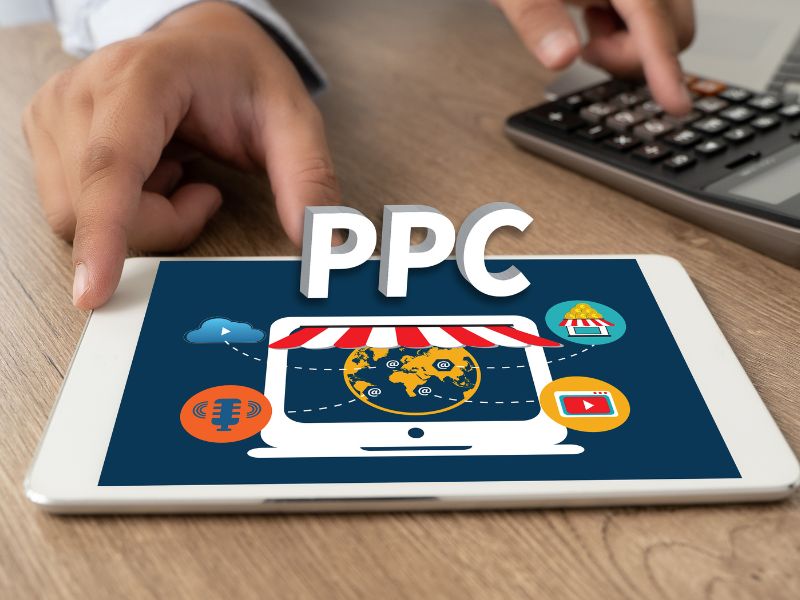
Unpacking SEO and PPC: The Three Pillars
Embark on a journey through the vibrant landscape of digital visibility, where the first beacon of insight illuminates with instant articles, swiftly followed by the thorough scrutiny of website audits. These audits, meticulous and revealing, pave the way for the second beacon: the rich tapestry of Google Analytics, interwoven with threads of average positioning, providing a tableau of user interactions and site performance. As the path unfolds, the third beacon emerges, casting light on search engine results and offering strategies to gracefully dance around another glitch that might obscure one’s digital presence.
The First Pillar: Instant Articles and Website Audits
As we glide from the dynamic realm of cross-network advertising, imagine a world where your digital presence blossoms overnight. The first beacon that guides this journey is the meticulous art of website assessments and the crafting of engaging Instant Articles.
Envision a digital artisan meticulously examining the nooks and crannies of a website, using tools akin to Google Analytics, to unearth opportunities for improvement. With each audit, a landscape of data unfolds, revealing the intricacies of user behavior and traffic patterns. It’s here that the average position of a website becomes not just a number, but a stepping stone towards commanding prominence in search engine results.
But the craft does not end there. Instant Articles emerge, a tapestry of words woven swiftly to captivate audiences, designed for swift consumption and even swifter sharing, propelling a brand’s narrative into the heart of search engine results. As another glitch in the matrix is smoothed out, these articles act as digital heralds, announcing the essence of a brand with lightning speed.
The Second Pillar: Google Analytics and Average Positioning
As we pivot from the dynamic arena of cross-network advertising, let’s delve into the heart of digital strategy with the second pillar that supports a robust online presence: Google Analytics and average positioning. Imagine a garden where every flower’s growth is meticulously measured, charted, and analyzed to ensure the most vibrant display—this is the essence of what Google Analytics brings to the digital landscape. It’s a tool that meticulously tracks the footprints of visitors, creating a tapestry of data that reveals the health and performance of a digital domain.
Through the lens of Google Analytics, the average position becomes a beacon, guiding the adjustments needed for a website to bask in the sunlight of the first page of search engine results. It’s more than a number; it’s a reflection of the digital dance between content relevance and user engagement. By observing the shifts in this dynamic metric, one can infer the ebb and flow of a website’s stature within the vast ocean of online information.
The Third Pillar: Search Engine Results and Overcoming Glitches
As the digital landscape unfolds like a tapestry of interwoven strategies, the focus shifts to the pivotal aspect of mastering online presence within search listings and resolving unforeseen hiccups. Picture a gardener diligently tending to a garden; similarly, the third fundamental component of a robust online strategy involves nurturing the placement within search listings and addressing technical mishaps with precision.
Imagine a stage where websites perform, and the audience’s applause is the coveted top spot in search listings—this is the essence of the third cornerstone of a sound strategy. Here, careful scrutiny reveals the dance of algorithms, where meticulous adjustments can lead to a standing ovation in the form of higher rankings. However, this performance is not without its perils.
At times, digital gremlins may introduce hiccups, causing listings to falter or disappear as if swallowed by a trapdoor on stage. Overcoming these glitches requires a blend of technical know-how and a calm, methodical approach.
SEO vs PPC: A Complete Guide for Branded Searches
Embarking on the digital marketing journey, one must discern the nuances between branded search strategies in SEO and PPC. With SEO, a tapestry of relevance and trust is woven over time, leading to enduring online prominence. In contrast, PPC offers the allure of quick visibility, like a flare shot into the night sky, garnering immediate attention. Yet, this quick visibility can be as fleeting as a shooting star unless sustained by continuous investment.
Quick visibility often becomes the beacon for businesses craving swift audience engagement. However, understanding the mechanics of both strategies ensures that the spotlight doesn’t dim prematurely.
Understanding Branded Searches in SEO vs PPC
Navigating the digital landscape, one stumbles upon the crossroads where search engine strategies diverge: the realm of branded queries. Understanding Branded Searches in SEO vs PPC is akin to discerning the fine art of attracting both loyalty and curiosity. Branded searches—those queries that include a brand name or a specific trademark—are a testament to a brand’s foothold in the consumer’s mind.
In the search engine optimization (SEO) universe, these searches are like a warm welcome mat laid out for familiar guests. They already know the brand and are likely searching to engage directly with it. SEO nurtures this relationship by ensuring that when a brand’s name is summoned in the search bar, the digital pathways lead straight to the brand’s doorstep, unencumbered by competitors.
On the flip side, pay-per-click (PPC) advertising hones in on these same searches with a sniper’s precision.
Quick Visibility: SEO vs PPC
As we navigate from the foundational understanding of SEO and PPC, let’s shift our focus to the arena of swift online presence. Imagine a race where visibility is the finish line – SEO and PPC are the competing sprinters, each with their own strategies to cross that line effectively.
When a business yearns for swift online presence, the choice between SEO and PPC becomes critical. Take, for example, the launch of a new product line. The clock ticks loudly, echoing the urgency to capture consumer attention. PPC, akin to a speedboat, cuts through the digital waters with precision, offering the advantage of appearing prominently at the top of search engine pages through paid adverts. It’s the go-to for marketers seeking to make a splash in the shortest span of time.
However, while the glow of PPC adverts may attract eyes quickly, it’s not without consideration of the privacy overview, which ensures that strategies align with consumer data protection standards. In this race for visibility, each move is calculated, with the end goal of attracting prospects through the allure of strategic online prominence.
The Complete Guide to SEO vs PPC: Privacy Overview
As we delve deeper into the intricacies of digital promotion strategies, it’s essential to shine a light on an often-overlooked aspect: the privacy implications inherent in the tug-of-war between search engine prominence through unpaid strategies and paid advertising. Navigating this landscape requires a discerning eye, particularly when it comes to the data protection and user privacy protocols that are entwined with these tactics.
In the realm of search engine prominence, the unpaid approach silently collects data through the observance of user behavior, clicks, and time spent on pages to finesse the user experience and enhance relevance. Conversely, paid advertising is more direct in its data collection, with platforms often requiring more personal information for targeted campaigns.
The comprehensive examination of these two strategies must consider how user consent is sought, stored, and utilized, ensuring compliance with global data protection regulations such as GDPR and CCPA. A thorough approach demands vigilance in auditing data handling processes, ensuring that a veil of privacy is maintained while still achieving the coveted spotlight in search engine queries.
Understanding ROI: SEO vs PPC
Navigating through the dynamic digital marketplace, sales teams are empowered by the profound impact of SEO and PPC strategies. These tools, when wielded with higher ROI cost awareness, become lighthouses guiding prospects through the fog of online content directly to the doorstep of sales. The cost consideration is pivotal, as it determines the sustainability and scalability of campaigns, with the sales team at the helm, steering toward revenue-rich shores. SEO and PPC together are the twin engines propelling websites to the forefront of targeted traffic, ensuring that every click and query could potentially unfurl the sails of commerce and fill the coffers of businesses.
The Impact of SEO and PPC on Sales Teams
As the digital curtain rises on the intricate world of online marketing strategies, let’s pivot our attention to the bustling back-stage: the sales teams, where the true impact of SEO and PPC takes center stage. Picture a group of sales professionals, their headsets aglow with the soft light of computer screens, as they eagerly await the influx of inquiries. SEO, the steady stream, nurtures leads with a gentle touch, guiding them down the path to conversion with content that resonates like a well-tuned melody. It’s the harmonious backdrop that supports the sales team’s efforts to cultivate relationships and close deals over time.
On the other side of the spectrum, PPC acts like the spotlight, directing a focused beam of potential customers straight to the sales team’s doorstep. It’s the drumroll that precedes the grand entrance of eager buyers, ready to engage. The immediacy of PPC campaigns ignites the sales floor with a palpable energy, as the potential for swift conversions sends a buzz through the room.
The Cost Awareness of SEO and PPC
As we turn the page from understanding branded search strategies, let’s delve into the financial lens that frames both search engine optimization and pay-per-click campaigns. Picture a scale, balancing the investments and returns of digital marketing efforts; on one side, you have the enduring yet often slow-to-bloom expenses of SEO – a garden that requires time and patience before it flourishes. On the other, the speed and precision of PPC stand out, akin to a vending machine that dispenses immediate visibility at the drop of a coin.
Cost awareness in this landscape is paramount. For SEO, imagine a tapestry where threads are woven over time, the intricate patterns emerging gradually. The initial costs may seem modest – no direct charges for clicks or impressions – but the canvas expands through sustained nurturing like content creation and keyword research. It’s the slow art of mastering the search ecosystem without the direct tollbooth of instant traffic.
Conversely, PPC campaigns are like fireworks that light up the sky instantly, with budget control as the matchstick.
How SEO and PPC Generate Targeted Traffic
As we navigate away from the intricacies of branding in search strategies, let’s turn our attention to the avenues that funnel potential customers directly to your doorstep. Imagine a bustling digital marketplace, where every click is a potential sale. Here, SEO and PPC work like magnets, drawing in those who are on the hunt for exactly what you offer.
The art of SEO, akin to planting a garden that blooms all year round, slowly attracts visitors with a myriad of colorful, information-rich content that blossoms atop search engine displays. These visitors are often in the midst of their research phase, eager to learn and possibly ready to purchase.
On the flip side, PPC operates like a neon sign on the digital highway, flashing enticing messages to those who pass by. It captures the attention of shoppers the moment they express interest with a search query, delivering them straight to your checkout page. Each ad is a beacon, guiding potential buyers who have a clear intent and are closer to making a purchase.
SEO vs PPC: Which is Best for Your Business?
Embarking on the journey to elevate a brand’s online presence, the road diverges into two distinct pathways: the steady climb of SEO and the speedy ascent of PPC ads. For small businesses, the decision intertwines with budget constraints and the quest for a gradual yet solid foothold online. SEO whispers promises of credibility and cost-effective strategies, while ppc ads beckon with their allure of rapid exposure.
As the path widens for large corporations, the choice becomes less about financial restraints and more about expansive reach and brand dominance.
SEO vs PPC: Which is Best for Small Businesses?
As the path from exploration to decision-making winds through the digital marketplace, small businesses must choose their routes wisely. When weighing the value of SEO against the immediacy of PPC ads, one must consider the unique challenges and advantages a small business faces.
For small enterprises, every dollar spent on marketing is a precious investment. PPC ads can be a tempting garden of immediate blooms, offering a quick burst of visibility in the competitive online space. Imagine a small travel agency seeking to highlight the best travel insurance companies amid a flood of options; PPC ads allow for a swift appearance at the top of search results, providing rapid brand recognition.
However, for those small businesses operating on a shoestring budget, the recurring costs of PPC ads may stretch the purse strings too thin, especially when the best covid1 restrictions impact consumer spending habits. Instead, a slow and steady growth through SEO can lay down deep roots, allowing a business to gradually climb the search result ladder.
SEO vs PPC: Which is Best for Large Corporations?
Navigating the intricate landscape of digital marketing, large corporations stand at a crossroads when choosing between PPC and SEO strategies. For these industry titans, the decision is not taken lightly as the impact resonates through every facet of their sprawling enterprise.
SEO vs PPC: Which is Best for Large Corporations?
Floating like behemoths in the vast digital ocean, large corporations often wield substantial budgets that afford them the luxury of a more diversified approach. Here, PPC ads become a strategic chess piece, offering the ability to capture prominent ad space with precision and agility. These paid campaigns can be tailored to highlight new product launches or pivot swiftly in response to competitor movements, painting the internet with the broad strokes of their brand’s presence.
However, it’s the marriage of PPC ads with a robust SEO strategy that truly sets these companies apart. With the resources to hire top-tier SEO talent and invest in sophisticated tools, they can cultivate a digital ecosystem where brand visibility blooms over time, rooted in the fertile soil of well-crafted content and authoritative domain standing.
SEO vs PPC: Which is Best for Startups?
Navigating the digital marketing landscape can feel like setting sail on a vast ocean, where Startups are the daring explorers in search of treasure on the horizon. When it comes to these ventures charting a course through the waters of online promotion, the dilemma of choosing between SEO and PPC is akin to selecting the right wind to fill their sails.
For startups, every resource counts, and making an impact quickly can be crucial to survival. PPC campaigns, akin to a gust of wind, can propel a startup into the market with speed, offering the advantage of immediate visibility among a sea of competitors. This rapid exposure can be a lifeline for products or services that require swift awareness to capture fleeting market opportunities.
However, the turbulent waters of paid advertising require a steady hand and a watchful eye on the budget, as costs can escalate like a storm on the horizon.
Conclusion
In the intricate dance of web prominence, the artistry of enhancing online presence through strategic adjustments and keen audience engagement defines a masterful approach. The tapestry woven by a fusion of meticulous keyword analysis, content creation, and user experience optimization offers a sustainable path to flowering online authority and enduring digital relevance.
Conversely, the dynamic world of pay-per-click presents a canvas for swift audience capture, where strategic bids for prime advertising slots translate into rapid engagement and conversion opportunities. A treasury of insights gleaned from performance metrics guides the calibration of campaigns towards market resonance and fiscal prudence. In the end, the equilibrium between these two digital strategies hinges on tailored application to the unique blueprint of a business’s goals and resources.

